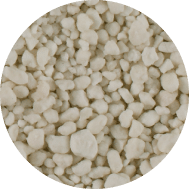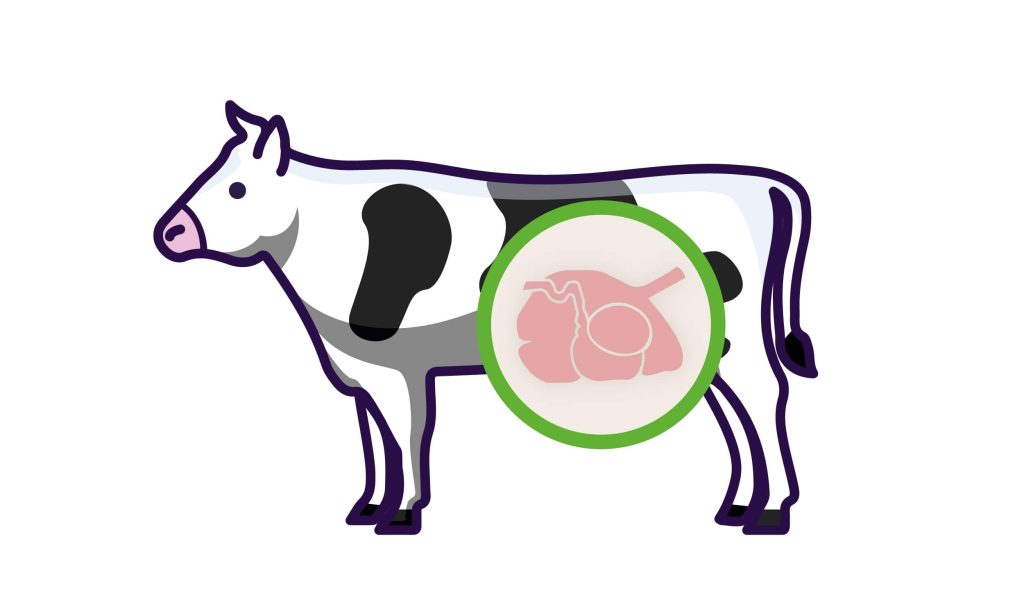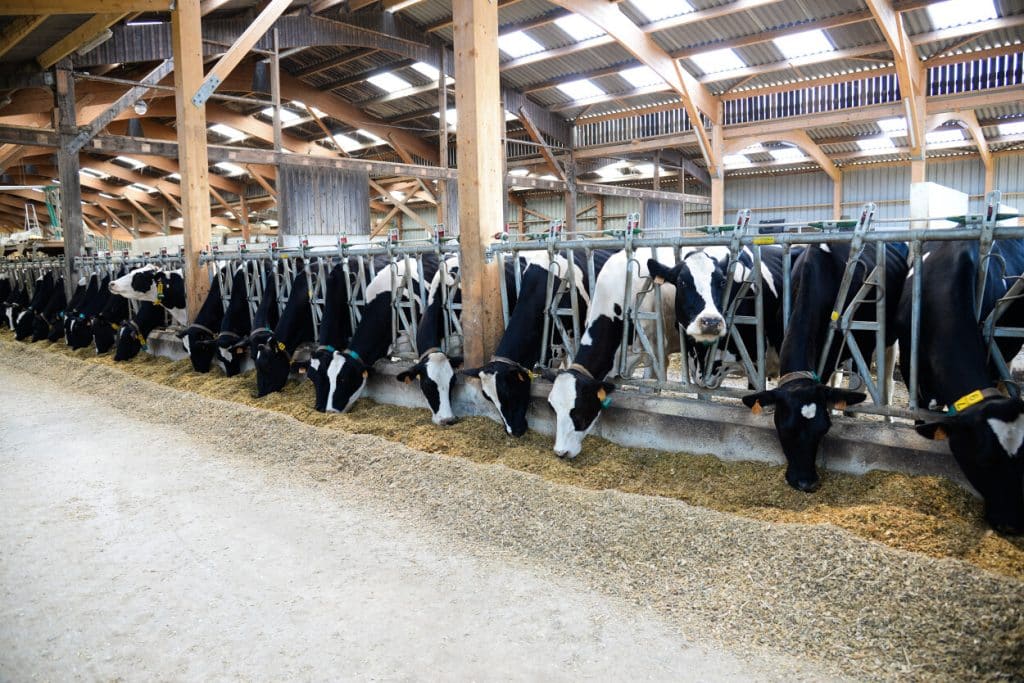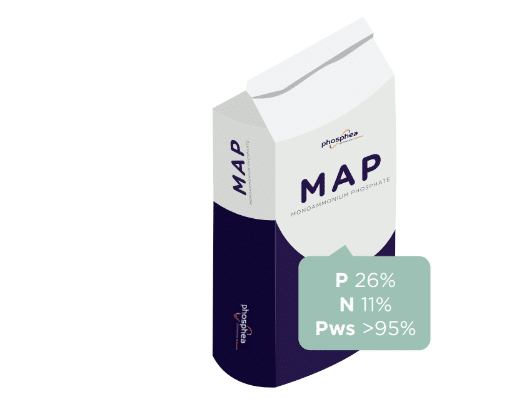Source of phosphorus and nitrogen

Monoammonium phosphate (MAP) is distributed in amounts of 30-70 g/cow/day. MAP is used with dairy cows and can also be used for beef cattle. As it contains no calcium, monoammonium phosphate is suitable for dry cows (close-up period). The aim is to provide a synchronized supply of P and N for rumen microorganisms, to optimize ruminal fermentation and thus, animal performance.
Ruminants need phosphorus for their bone structure and cell functions, but unlike monogastric animals, they also need phosphorus for the rumen microflora, which has a higher P requirement than maintenance nutrient requirements (Meschy, 2010).
Total rumen bacteria phosphorus requirement is partly met through available feed phosphorus and salivary recycling. Durand and Kawashima (1980) therefore found that phosphorus water solubility is key to ensuring satisfactory rumen productivity.
Monoammonium phosphate (MAP) provides a high phosphorus content (26%) and a high water-soluble phosphorus level (>95%). In vitro trials showed high and rapid phosphorus solubilization rates from monoammonium phosphate in the rumen fluid. This results in direct P intake by rumen microorganisms. With poor feed management, P salivary recycling decreases, resulting in a drop in available phosphorus for rumen bacteria and therefore, a decline of cellulolytic activity (Durand et al., 1989; Goselink et al. 2015). With its high water-soluble phosphorus content, monoammonium phosphate (MAP) therefore helps to maintain bacterial activity (of cellulolytic bacteria in particular).

Once ingested, the nitrogenous components in dairy cow feed can be converted into either dietary protein nitrogen or non-protein nitrogen (NPN) depending on their degradability.
The NPN fraction provides a direct source of nitrogen for microbial protein synthesis. Rumen bacteria are in fact the only bacteria that can use this NPN fraction. Urea is the primary source of non-protein nitrogen, though other NPN sources exist as monoammonium phosphate (MAP), which provides 11% N.
By synchronously providing 26% of highly available P and 11% of soluble nitrogen (N), monoammonium phosphate (MAP) stimulates rumen activity.


Monoammonium phosphate (MAP) is distributed in amounts of 30-70 g/cow/day. MAP is used with dairy cows and can also be used for beef cattle. As it contains no calcium, monoammonium phosphate is suitable for dry cows (close-up period).
The aim is to provide a synchronized supply of P and N for rumen microorganisms, to optimize ruminal fermentation and thus, animal performance.